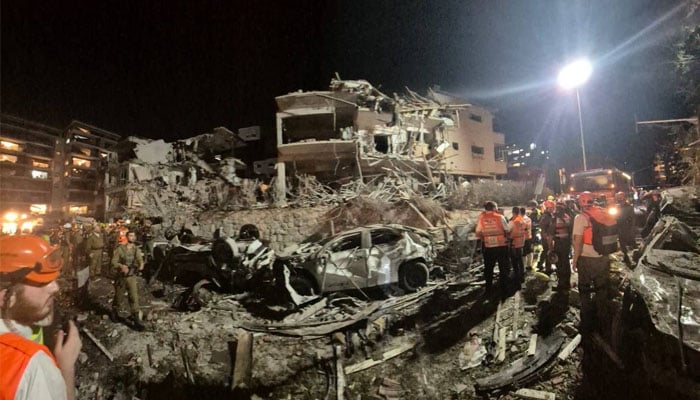CAIRO: A barrage of over 200 Iranian missiles struck Tel Aviv and surrounding areas in a massive retaliatory operation named “Vada-e-Sadeq 3,” causing widespread destruction.
Videos and images circulating on social media show collapsed buildings, burning vehicles, and debris-strewn streets in Tel Aviv and Ramat Gan.
The damage marks one of the most intense missile attacks Israel has faced in recent history.
Fox News aired footage from Ramat Gan highlighting structural damage to high-rise buildings and shattered vehicles. Iranian media also released videos claiming to show direct hits on military and strategic targets inside Israel.
So far, four Israeli civilians have been confirmed dead, with over 60 injured, according to Israeli media sources.
The Iranian missile retaliation came after Israel launched pre-dawn airstrikes deep into Iranian territory, striking more than a dozen military and nuclear-related sites. Targets included the homes of senior military commanders and sensitive infrastructure.
Among those reportedly killed in the Israeli strikes were General Hossein Salami, head of the Islamic Revolutionary Guard Corps (IRGC), General Mohammad Bagheri, Chief of Staff of Iran’s Armed Forces, and Major General Gholam Ali Rashid, commander of Khatam al-Anbiya Headquarters, along with six scientists and several senior IRGC officers.
These targeted killings have dramatically escalated tensions and pushed the two nations into direct, open conflict.
Israeli defense institutions estimate that the conflict could last at least two weeks, though military leaders have warned the timeline remains uncertain. Prime Minister Benjamin Netanyahu has vowed to continue operations, declaring an intent to completely dismantle Iran’s missile production capability.
Netanyahu stated: “We will not stop until Iran’s ability to manufacture and launch missiles is neutralized. There is no timeline for when this ends.”
With both sides entrenched and casualties mounting, the international community is bracing for further escalation and a potential regional spillover.


Comments are closed.